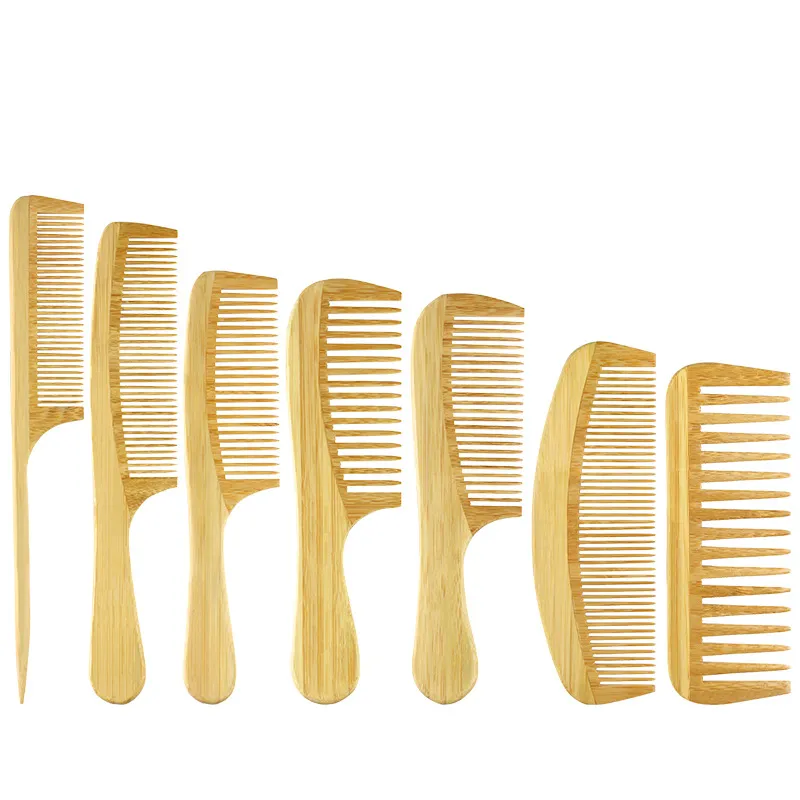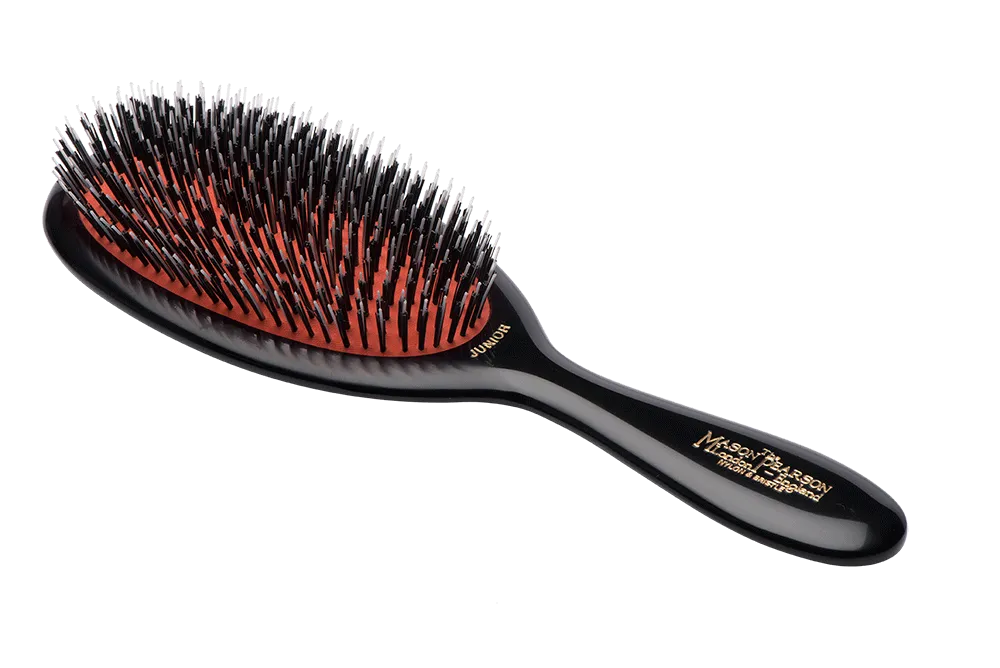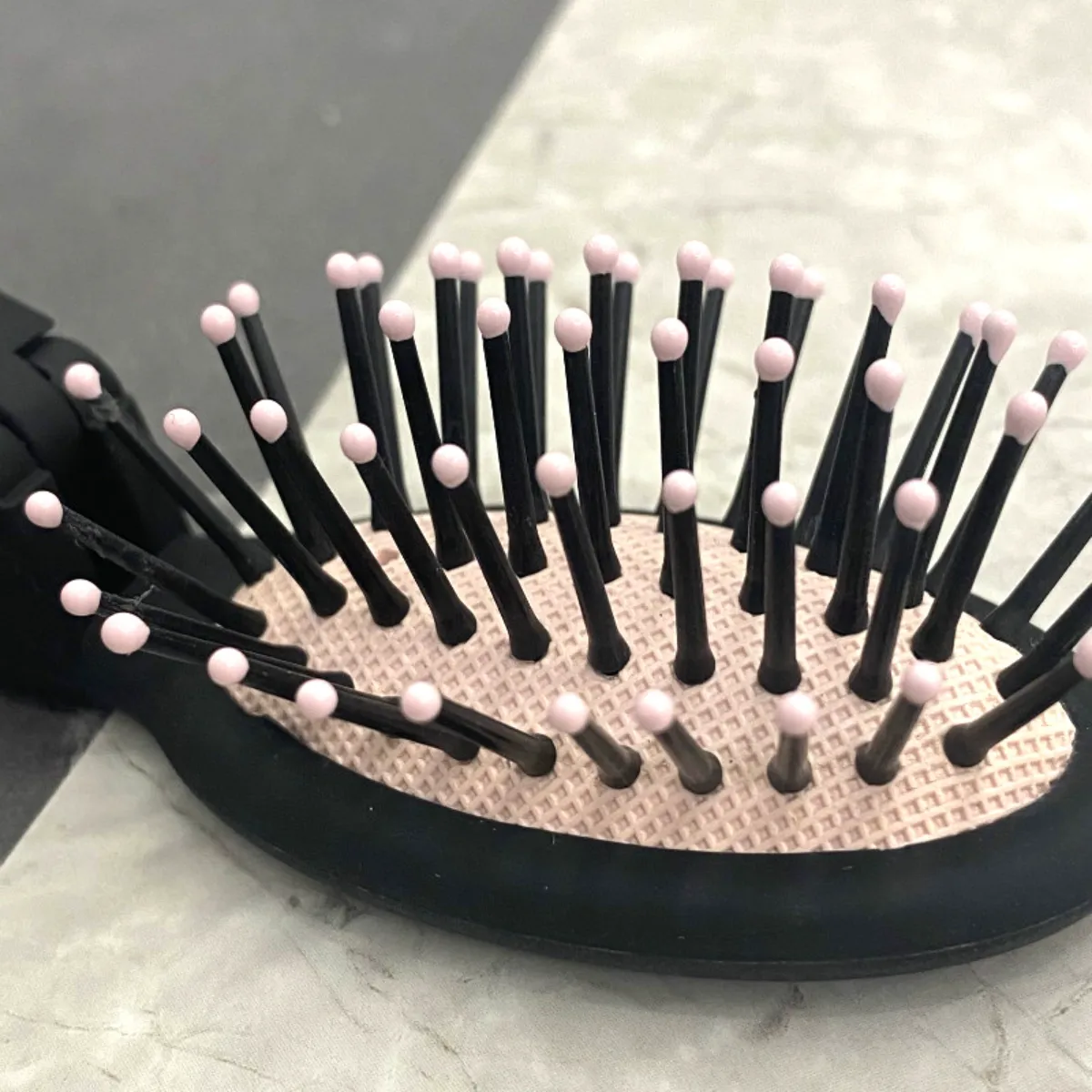When you look closely at a high-quality wooden or bamboo flat comb, you might notice that the teeth and the handle are not carved from a single piece of wood but are instead joined together. This design isn’t just a matter of convenience — it’s a result of structural mechanics and the natural characteristics of wood. Let’s explore why this joint structure is necessary, what benefits it brings, and when a one-piece comb can work instead.
1. Why a Joint Structure Is Necessary
Wood is an anisotropic material, meaning its strength varies depending on the grain direction. A comb’s teeth and handle experience forces in different directions during use:
- Comb teeth act like tiny cantilever beams. They bend as they pass through hair, so their grain should run along the length of each tooth to resist bending and prevent breakage.
- The handle, on the other hand, mainly bears pulling or bending forces along the comb’s length. To stay strong, the handle’s grain needs to run parallel to its long axis.
If both teeth and handle were carved from a single block of wood, one part would inevitably have the grain running across the wrong direction. That means one section — either the handle or the teeth — would be much weaker and more likely to crack or snap.
By making the two parts separately, manufacturers can orient the wood grain properly for both components before joining them together. This approach allows each section to bear force in its strongest direction.
2. Advantages of the Separate-tooth-and-handle Design
- Higher durability:
The teeth and handle both align with the wood’s natural grain direction, dramatically increasing resistance to bending and breaking. - Prevents crack propagation:
The joining interface — whether glued or interlocked — helps stop small cracks from spreading through the entire comb. - Better material adaptability:
Different materials can be used for different parts: for instance, a tougher, more flexible wood for the teeth, and a harder, denser one for the handle. - Improved longevity:
A properly joined comb maintains its structure over years of use, even under the repeated mechanical stress of daily grooming.
3. When One-piece Wooden Combs Work
Some fine-grained hardwoods are so dense, uniform, and stable that they can handle forces from multiple directions without splitting. These woods can be carved into one-piece combs without needing a joint structure. Common examples include:
- Boxwood (Buxus): very dense and uniform in texture, traditionally used in high-end handcrafted combs.
- Green sandalwood, rosewood, or ebony: these heavy hardwoods are less prone to cracking across the grain and can support one-piece carving.
These materials are ideal for decorative or luxury combs, though they are expensive and harder to work with.
4. Materials Better Suited for a Joint Structure
Woods that show strong grain directionality — such as beech, birch, elm, or ash — and bamboo, which naturally splits along its fibers, are more suitable for two-part designs. In these cases, joining the handle and teeth allows the craftsman to take full advantage of the wood’s grain strength while minimizing weak spots.
5. Common Joint Methods
- Mortise-and-tenon joints:
A traditional technique similar to furniture joinery, providing mechanical interlock without metal fasteners. - Adhesive bonding:
The most common modern method, using strong wood glue with pressure curing to create a seamless, durable joint. - Insert or slot joints:
The handle is cut with slots or holes, and the teeth section is inserted and glued in place — ensuring precise alignment and high strength.
6. The Mechanics Behind It
In mechanical terms, wood is strongest along its grain (longitudinal direction) and weakest across it (radial or tangential directions). The tensile strength along the grain can be 10–40 times greater than across it. If comb teeth were cut against the grain, they’d easily snap under small bending stress.
By aligning both parts according to the grain, the comb takes full advantage of wood’s natural strength — making the joint structure not a flaw, but a clever adaptation to the material’s physical properties.
In Summary
The separate-tooth-and-handle structure of a wooden or bamboo comb is a smart engineering decision based on how wood behaves under stress. It ensures that both sections — the fine, flexible teeth and the solid, supportive handle — are positioned to use the wood’s strongest direction. The result is a comb that lasts longer, feels sturdier, and performs better.




